"Outer Animal, Inner Anguish" (2016)
Pencil drawing created for Drawing course. Displayed at Anglo-American School of Moscow. Realistic sliver of a face shows a tortured inner self, fighting for control inside the mind of a monstrous external self, shown with the cartoonish outer eye and stitched smile. A bindi/bottu holds both the external and internal self together, at the seams. The hair is drawn stylistically, with fluid shapes and slight curves fitted next to triangles.
More from this Category:

"Portrait of a Russian Girl" (2016)
Drawn with pencil. The focus of this piece was to draw human eyes, brows, and a nose in accordance to correct proportions and realism. Note the shading, detail in the pupils, and how color is shown despite its absence.
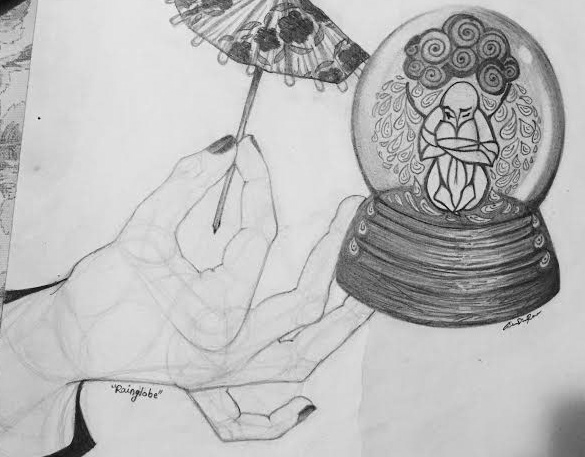
"Rainglobe: Trapped Angel" (2016)
Illustrated with pencil for a Drawing class assignment, in which students were instructed to create a piece that incorporated a hand, an object, and glass. Thus, this illustration is of a small, isolated, angelic figure trapped in a globe. A raincloud in the globe showers onto them, and the feathery drops turn into wings. Hence, the title of the piece. Meanwhile, outsiders attempt to offer comfort, represented by a hand holding a cocktail umbrella up to the glass. However, their efforts are futile; the figure is beyond their reach, and it will take more than a frail umbrella to shatter the glass. The figure, drafted in the second image below (you'll see it when you scroll down), has wrapped their limbs into a near-fetal position. They peek out at the hand, at the comfort being offered, but do not engage with it. Note the use of shading in the glass and wooden base of the globe, the high contrast of the figure's outline, a spot of light upon the glass, and the mechanical drawing style of the hand which breaks it into its simplest forms.

Pitchdeck Samples pt. 1 (2024)
CUSTOMER REVIEW: "Excellent, much more vivid [than company's previous pitchdeck].” Pitchdeck for potential investors, designed using Google Slides, for Bloqcube Inc., a pharma-tech start-up. Integrated logo by breaking cube into bars with arrow motif to represent forward-thinking solutions and the secure movement of patient data via blockchain. Created patterns from logo to fill space when needed.
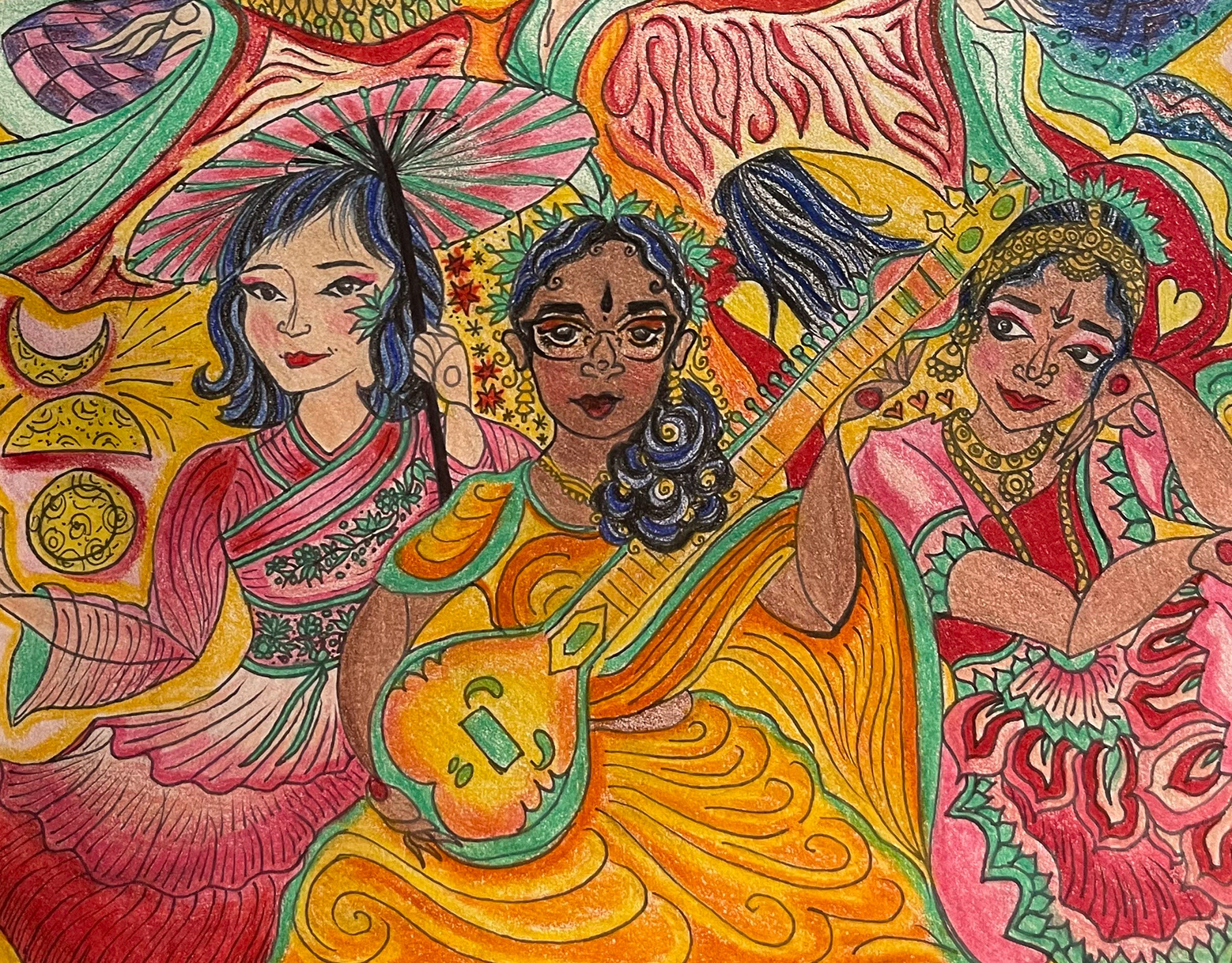
“Indo-Chinese Classical Dance" (2024)
Drawn with colored pencil and ink based on ink outline (see "Draft" in Poster section of portfolio). Each dancer is based on reference photographs of traditional Chinese classical dance costumes and traditional Indian classical dance/music costumes (Bharatanatyam, Odissi, Carnatic). Motifs associated with each culture, including a parasol and a sitar, are included. A bold, gradient color scheme which suits both cultures was applied to the clothing, hair, and backdrop. Each figure's costume, makeup, hairstyle, and accessories is distinct. Figures are arranged and layered on the poster to show people sharing classical arts and cultural spaces with each other. Motifs of the moon and the stages of love, which was the showcase theme, is included to the bottom left (moon phases) and bottom right (small hearts). Symmetry and balance was achieved by keeping figures in parallel poses and parallel colors. Finally, the cursive script used for the description stands in contrast with the showcase information, title, and the dance clubs' names (Mei-Kala). A bold, curved script was used to match the curves and angles of the performers' bodies.
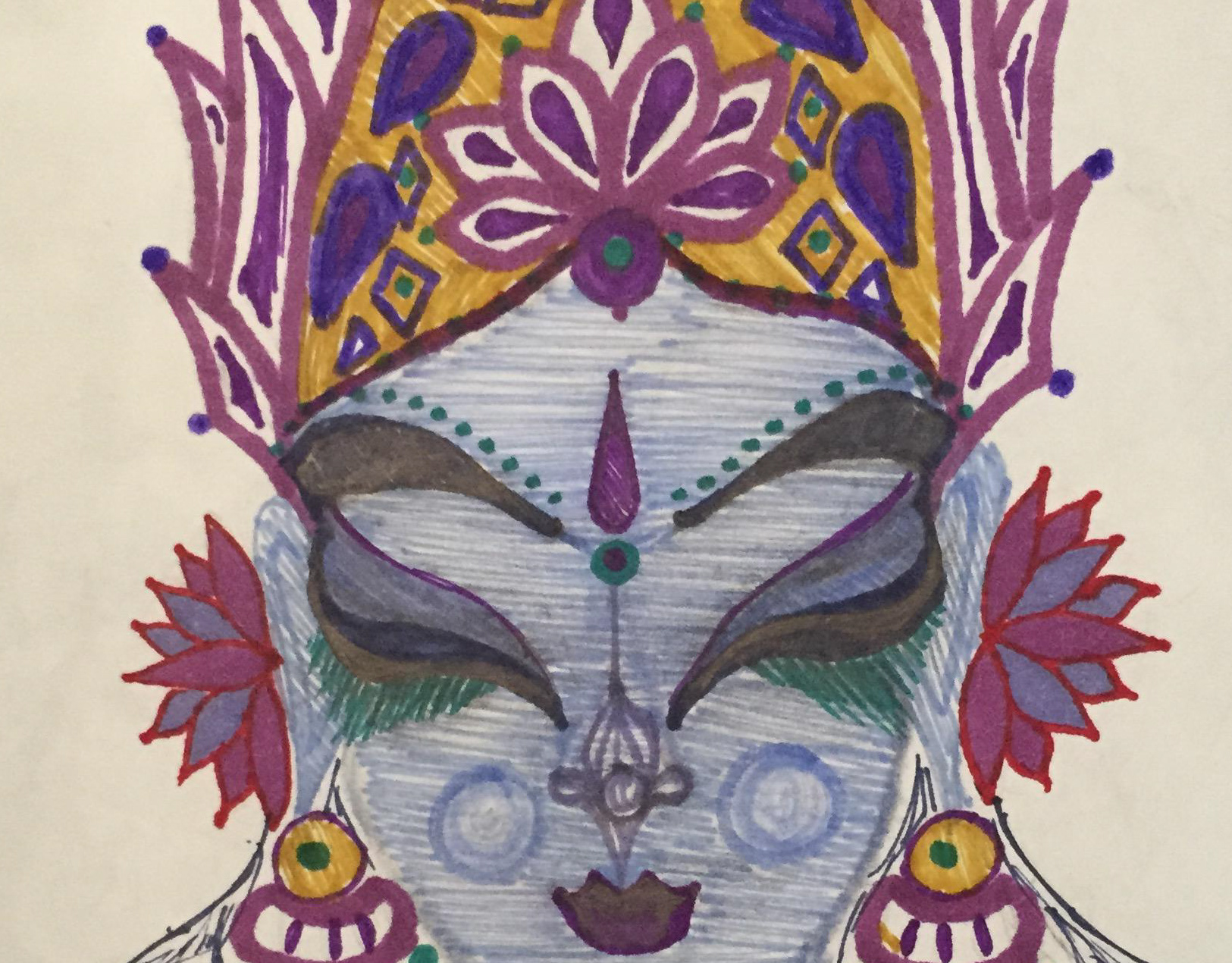
“Lakshmi: Serene Beauty” (2016)
Sketched with ink markers. Piece depicts the Hindu goddess of beauty and wealth, Lakshmi Devi. Two lotus flowers are tucked behind her ears, and her golden crown contrasts with the blue tone of her skin. Lakshmi is symbolically shown with blue skin to indicate that she is the wife of Sri Vishnu (who is also depicted with blue skin in Indian artwork to indicate that his skin is very dark, akin to that of blue rainclouds). Lakshmi's facial features in this peace are meant to bring a sense of peace, and her hair is drawn stylistically in curls.
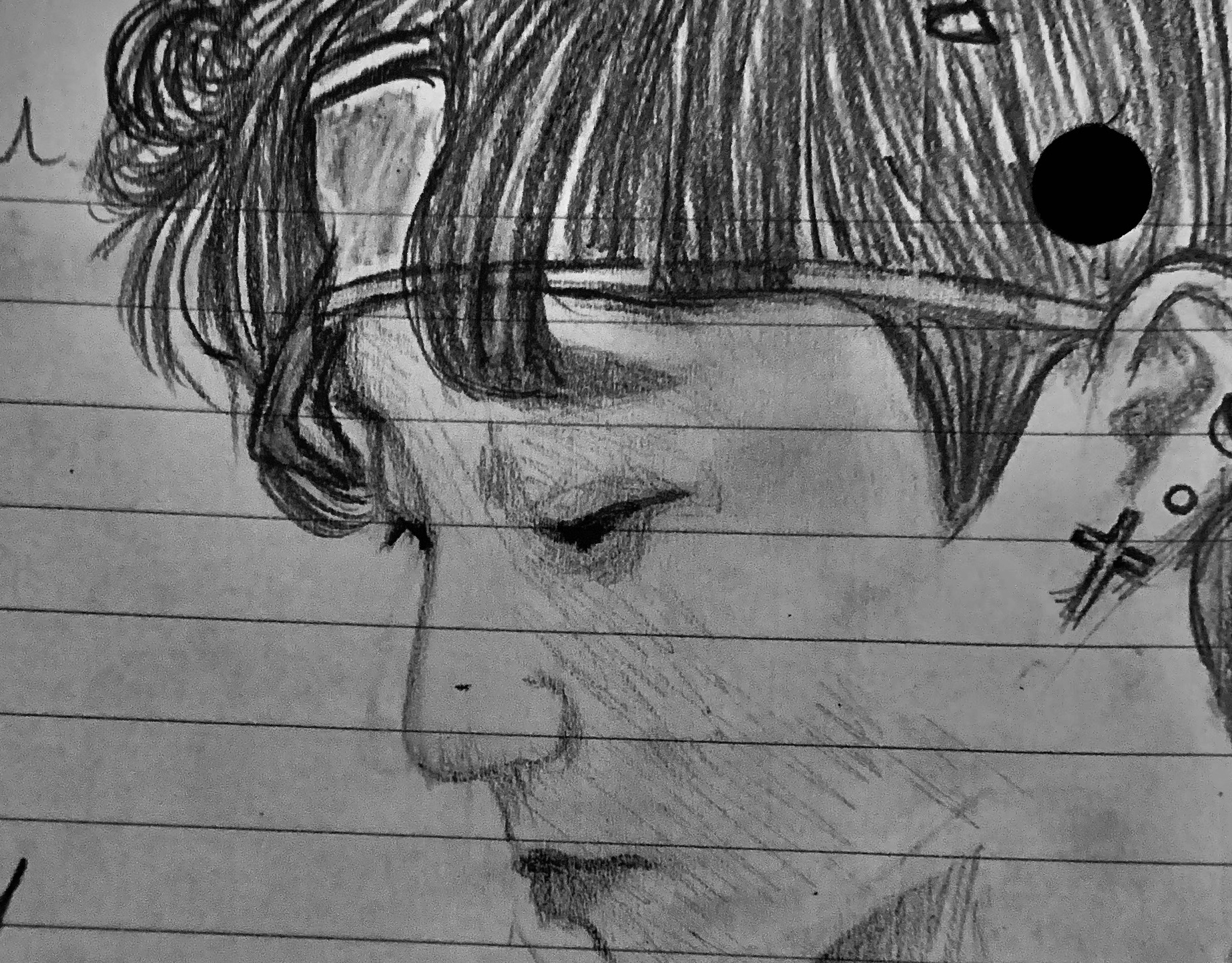
“Beomgyu” (2019)
Freehand sketch with pencil. This illustration is of Beomgyu, a Korean pop idol from the band, "TXT (Tomorrow by Together)". The aim of this piece was to practice drawing a three-fourths profile of a male subject. Focus was kept on bringing out the eyelashes, subtle lips, and hair. This was drawn in a realistic style, to test the artist's ability to capture a subject quickly.

"Self-Portrait in St. Petersburg" (2015)
Freehand pencil sketch using 4B and HB pencils. Drawn on a train from Moscow to St. Petersburg, with focus on blocks of unblended shadows and looser, flowing shapes. The goal was to blend realistic and surrealistic styles between face and hair. The linework outlining the profile purposefully thins and thickens to create delicacy.
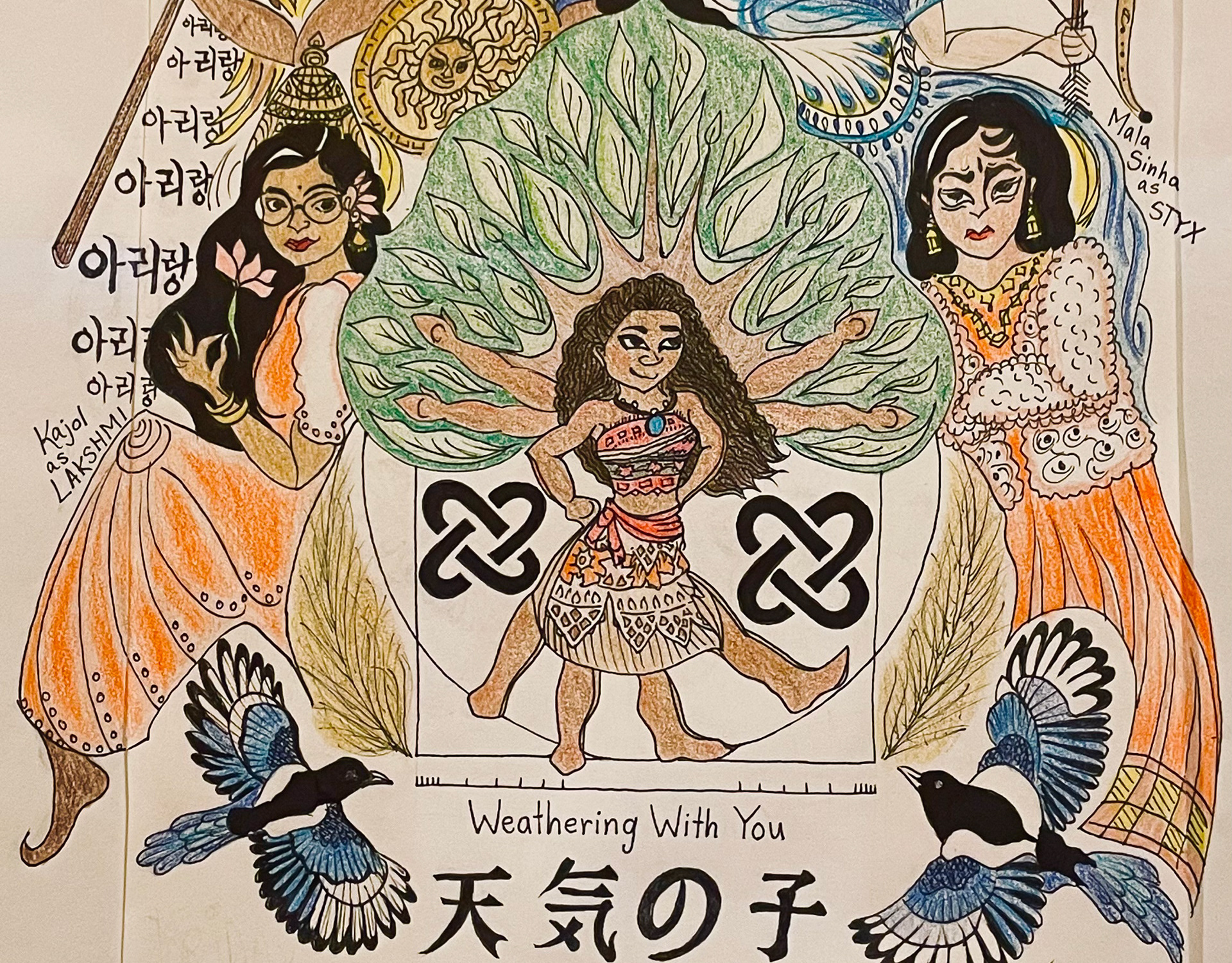
“Flute Choir: Spring Concert" (2023)
Drawn with ink and colored pencil. Goal of the design was to showcase multi-cultural unity between symbolic figures from historic art, music, mythology, and film- this aligned with the showcase theme of bringing diverse music to the flute choir group. (From center to outward layers) Moana, a Polynesian princess from Disney's film "Moana" stands center, since "How Far I'll Go" was being performed. She poses with with two extra sets of limbs, at the center of a square and circle, with a line and short marks, all drawn in a nod to the famous "Vitruvian Man" drawing by Italian artist Leonardo da Vinci, to represent human anatomy. Her arms make up the branches and her legs make up the roots of a tree, representing nature. So, this combination was meant to show Human + Nature = Human Nature, since "Human Nature" by Michael Jackson was being performed. On her right and left, there is a symbol of "Unity" or "Umoja" from the seven principles of the African holiday of Kwanza, since "Umoja," composed by Valerie Coleman, was being performed. Excerpts from the OST of a Japanese animated film, "Weathering With You" were being performed, so the title was written in English and Japanese at the bottom, while a character (wearing a red bow and yellow boots) was drawn at the top of the page. Three Korean folk songs were represented: "Blue Bird" was shown in two Korean blue birds, which carry special symbolism; "Gold Grass" was shown in two bunches of the plant on either side of Moana's tree; and the word "Arirang," from the Korean patriotic song of the same name, was written on the left side. 1. "Mala Sinha as STYX" represents the sullen character played by the actress Mala Sinha in the 1963 Hindi film "Gumrah." "Tujhko Mera Pyaar Pukaare" from that film was performed, alongside Thomas Whitman's "Styx: Goddess of the River Styx and Personification of Hatred." 2. "Jaya Bhaduri as ARTEMIS" represents the heartbroken character played by the actress Jaya Bhaduri in the 1973 Hindi film "Abhimaan." Her song, "Tere Mere Milan" was performed alongside Thomas Whitman's "Artemis: Goddess of the Hunt." The Greek goddess thus has a bow, arrow, and quiver, while wearing a sari. 3. "Bhagyashree as ATHENA" represents the actress Bhagyashree in the 1989 Hindi film "Maine Pyar Kiya." The song "Dil Deewana" was performed alongside Thomas Whitman's "Athena: Goddess of Wisdom." Hence, she wears the costume of her character along with the helmet, spear, Medusa shield, and owl symbol of the Greek goddess Athena. 4. "Kajol as LAKSHMI" represents the lovestruck character played by the actress Kajol from 1995 Hindi cult film "DDLJ." Her song, "Tujhe Dekha Toh" was performed alongside "Flower Duet" from the French musical "Lakmé." Since "Lakmé" is the French word for "Lakshmi," the Hindu goddess of beauty and wealth, Kajol is dressed in the clothes of her character along with the lotus and ornaments of Lakshmi. Hence, the cultures that are featured in this piece include: Polynesian, African, American, Italian, Japanese, Korean, Greek, Indian, and French.
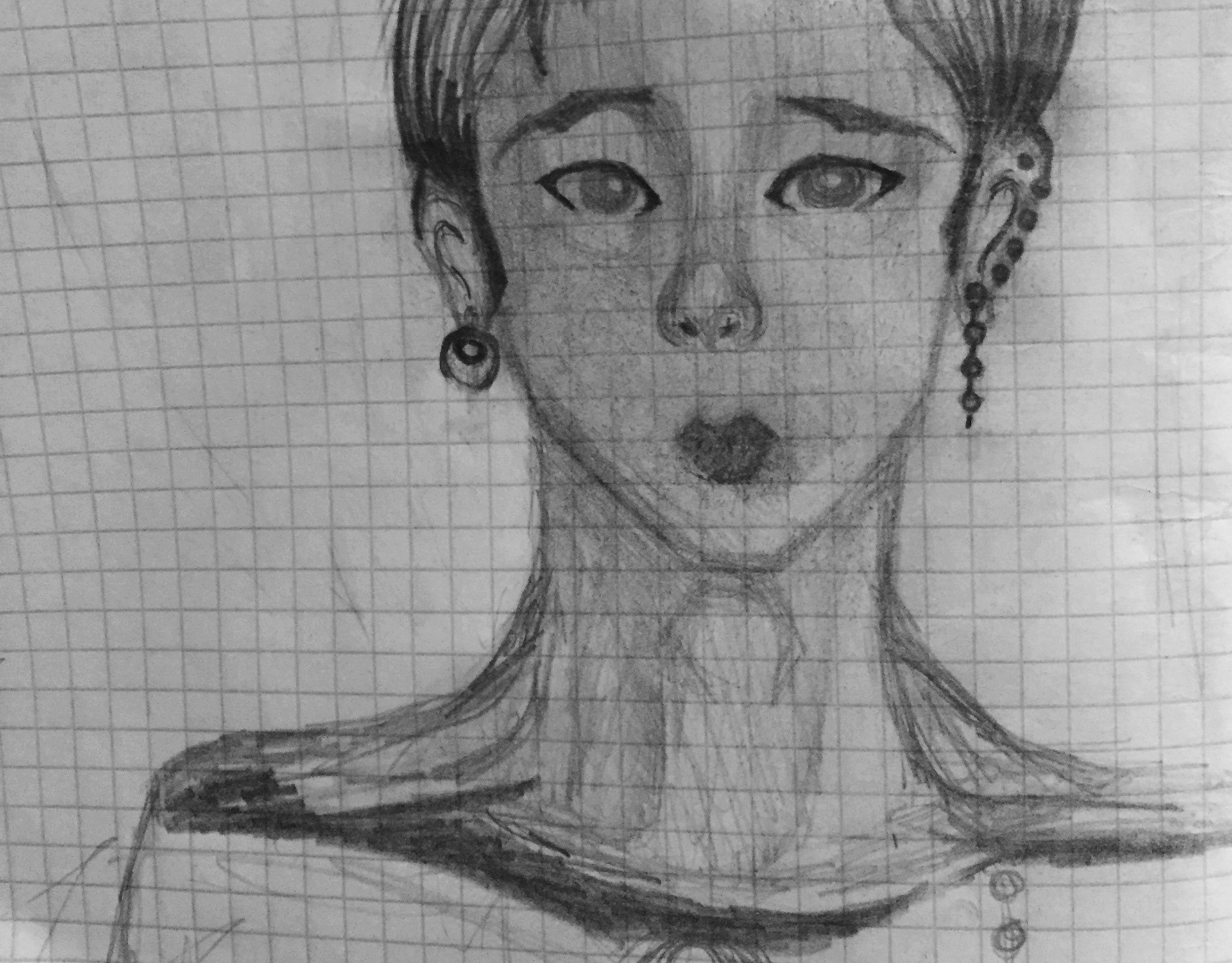
“Doe” (2016)
Freehand sketch with pencil. This illustration was done to practice drawing a type of hairstyle. Other notable aspects include the piercings, eyeliner, heart-shaped mouth, and linework on the collarbones and neck.
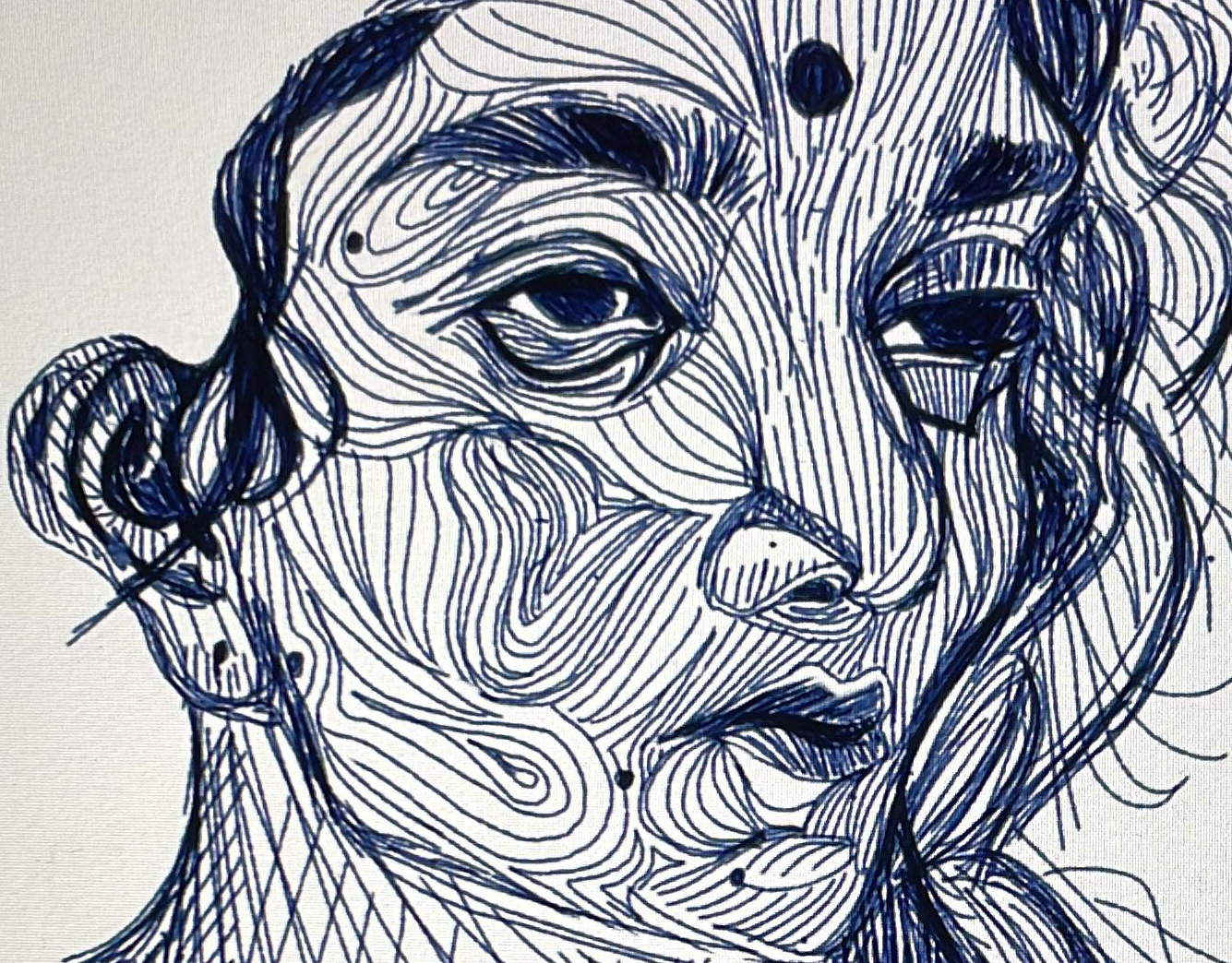
"Sai Pallavi Portrait" (2022)
Freehand portrait of Telugu film actress, Sai Pallavi. Illustration, made with Adobe Illustrator, is of a close-up from "Shyam Singha Roy (2021)." Sai Pallavi portrays a devadasi, or hereditary practitioner of classical dance, who yearns to be with her beloved Shyam. This portrait aims to capture the character, so very young and yet so very old, gazing into the distance. Hence, her hair is partially black and partially implied to be white via frazzled strands and empty space. The medium is meant to mimic traditional ballpoint pen sketches while utilizing patchwork to create dimension and flow in facial features.